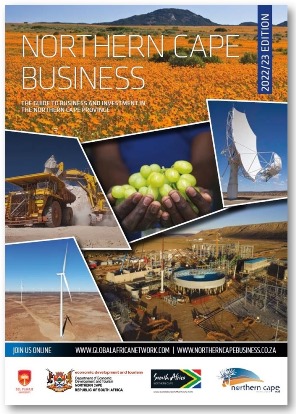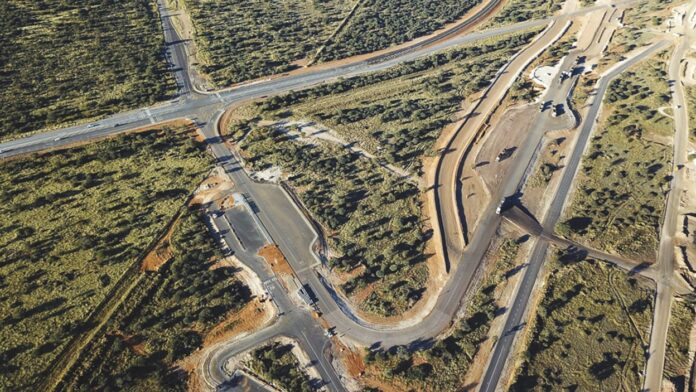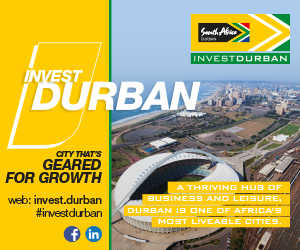The Premier of the Northern Cape, Dr Zamani Saul, made a bold claim in his annual State of the Province address in February 2022. He said, “Madam Speaker, the next hundred years of mining in the country are in the Northern Cape.”
He has good reason for such optimism. The single biggest mining investment in South Africa is moving ahead smoothly near Aggeneys where Vedanta Zinc International has been extracting zinc since 2018. New manganese projects are being undertaken in the eastern part of the province with the new mine near Hotazel, Mokala, one of the most prominent. Interest in copper mining (and retreatment) is growing, not least because copper has a role to play in the green economy.
Electric vehicles are dependent on copper and it can transmit and help store energy. Combined with the Northern Cape’s abundant resources of wind and sun, it is easy to see how planners are seeing linkages throughout the green economy and thinking of the roles the province may play.
A Northern Cape Green Hydrogen strategy has been approved and Sasol is doing a feasibility study. Planning for a deepwater port at Boegoebaai, which will greatly assist in logistics operations for the mining and agricultural sectors, is being linked to the potential to tap into the potential of green hydrogen.
Bid Window 6 of South Africa’s Renewable Energy Independent Power Producer Procurement Programme (REIPPPP) was launched in April 2022, promising to bring a further 2 600 MW to the national grid. Since the first bid was finalised, a total of 66 756 GWh of renewable energy has been procured, much of it in the Northern Cape which has a particularly strong suit in solar power projects.
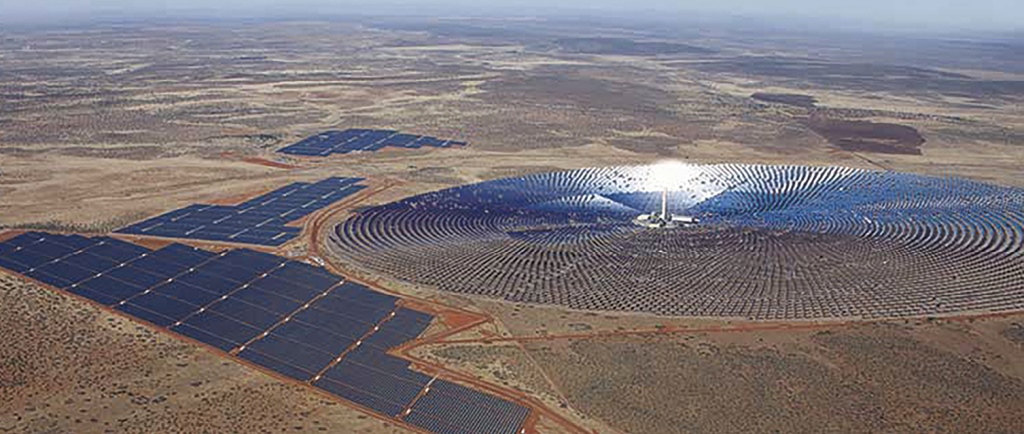
Investment opportunities
An Investment Conference held in 2019 showcased a number of initiatives being taken by the Provincial Government of the Northern Cape to attract investors and to make the experience of investing easier. This was followed in 2022 by another investment conference with a specific focus on mining.
The Northern Cape Investment Booklet provides a comprehensive overview of the province’s assets and advantages, together with a list of investable projects in a wide range of sectors.
Key projects are linked to broader spatial and sectoral plans that play to the province’s strengths. Among these high-impact projects are:
A multi-nodal corridor is envisaged for the province, running from the Atlantic coast to the commodity-rich Gamagara mining corridor in the vicinity of Kuruman.

Invest SA, through the National Department of Trade, Industry and Competition (dtic) has established a provincial One Stop Shop for investors, lowering the cost of investing and helping to iron out any bureaucratic delays.
Another angle for attracting investors to the province is to improve infrastructure. This is being done in terms of roadworks (with the South African National Roads Agency, SANRAL), waterworks and information and communications technology (ICT). A range of organisations are working on bringing the province up to date with the latest in ICT. This includes the National Department of Science and Innovation (DSI) which is paying for bursaries for students in data science at Sol Plaatje University and training electrical engineers and fibre optic technicians. The DSI is a key participant in the SKA programme.
The Northern Cape is investigating the creation of a state construction company to take on up to 30% of infrastructure projects in the province. The creation of the Northern Cape Innovation Forum (NCIF) points to the way ahead for the province. The NCIF intends to bring together academics, government and business leaders, civil society and labour, to consider the impact of innovation and technology, and to work out how best they can be harnessed to the maximum advantage of all citizens. The project is led by Sol Plaatje University with support from the National Department of Science and Innovation and the Technology Localisation Implementation Unit of the Council for Scientific and Industrial Research (CSIR).
With the location within the Northern Cape of one of the world’s greatest technological marvels, the Square Kilometre Array (SKA) radio telescope, there is scope for young scientists and engineers to dream. Sol Plaatje University in Kimberley has a strong suit in teacher training, but an expanding curriculum speaks both to being able to exploit the SKA link through subjects such as ICT and data science and an appreciation of the past via heritage studies and paleo-sciences.
The university’s location in an arid region means that future programmes will be developed to study agriculture in water-stressed conditions. Building on the campus, which will eventually cover 190 000 m², is expected to continue for another decade.
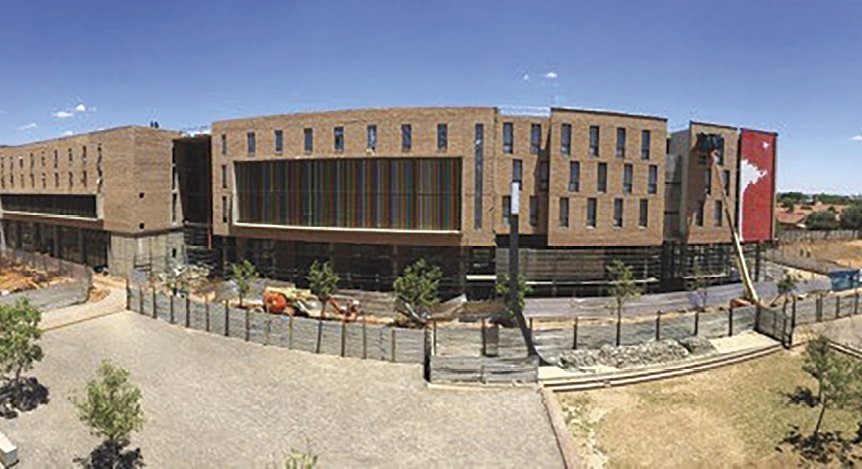
The economy
Mining and agriculture, the traditional pillars of the provincial economy, remain important. Both sectors continue to contribute (despite fluctuating iron-ore prices and periodic droughts) but both sectors are showing potential to expand into new and productive terrain.
The Kalahari Basin contains 80% of the world’s manganese reserve, but only 15% of global production comes from this area so there is enormous scope for development. Several new black-owned manganese projects are underway. The world receives 7% of its diamonds from the Northern Cape, and exports of zinc and lead from the province account for 13% of global demand.
Iron-ore miners have done particularly well recently but it is the development of new zinc and copper projects that are catching the eye. Vedanta Zinc International has invested $400-million in the first phase of its Gamsberg project and Orion Minerals has announced that its bankable feasibility study was positive for a planned zinc and copper project at Okiep.
The modern global economy needs particular minerals for its cellphones, renewable energy batteries and electric vehicles, and the Northern Cape has a lot of them. Investors are expected to follow in search of cobalt, copper, lead, nickel and zinc.
A notable feature of Northern Cape agriculture is its diversity, a result of the diverse soil and weather conditions. The 38 000 ha Vaalharts Irrigation Scheme produces wheat, fruit, groundnuts, cotton and maize and along the banks of the Orange River many high-value horticultural products such as table grapes, wine grapes, sultanas and cereal crops are cultivated. A quarter of the country’s onions are produced in the Northern Cape and in the drier areas, goats and sheep do well.
Niche products such as rooibos tea and karakul pelts are other provincial specialities, with aquaculture and mariculture showing great potential.
The Northern Cape is home to six national parks and five provincial parks and nature reserves. The Richtersveld Cultural and Botanical Landscape is a World Heritage Site and the Namaqualand spring flower display draws many visitors.
Most of the province is semi-arid (with a coastal strip) and it receives relatively little rainfall. Summers are hot and winters are cold.
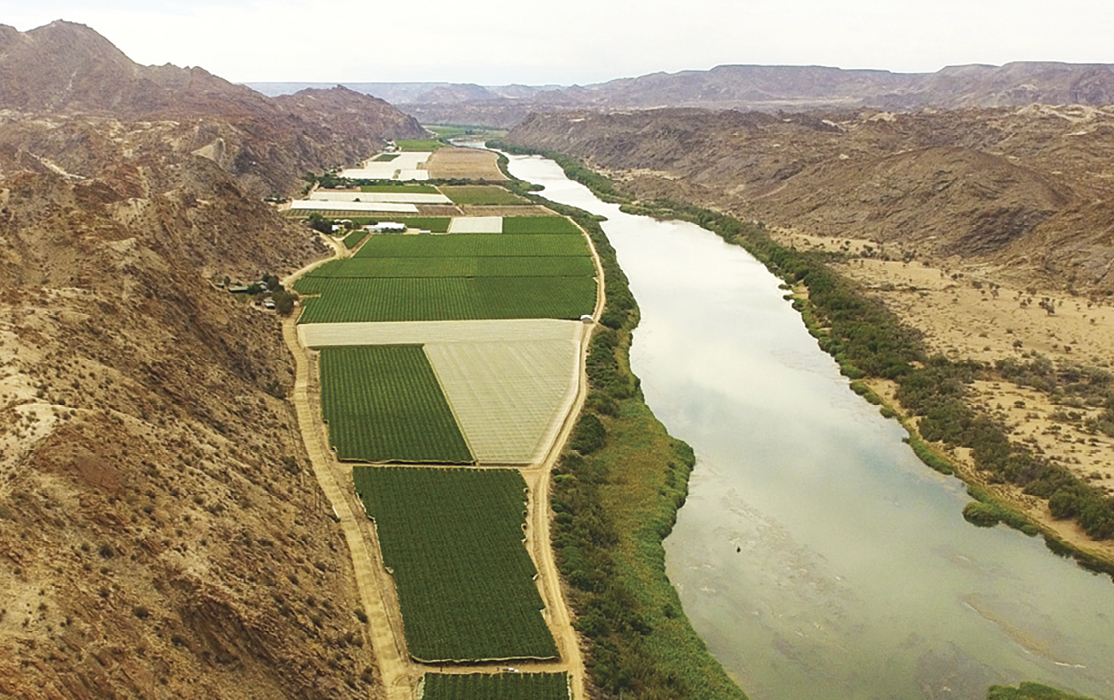
Municipalities
The Northern Cape has five district municipalities.
Frances Baard District Municipality
Towns: Kimberley, Barkly West, Warrenton, Hartswater, Jan Kempdorp.
This district accounts for 40.3% of the province’s economic activity. It is the smallest but with a population of approximately 325 500, it is the most densely populated. Strategically located and with good infrastructure, Kimberley is the leading centre in the province for retail, financial services, education, commerce and light industry.
The Mittah Seperepere Convention Centre and the Sol Plaatje University are in Kimberley. Mining and agriculture are found in rural municipalities. Agriculture in the region comprises crop cultivation and stock and game farming. The Vaalharts Water Scheme is the largest irrigation project of its kind in the southern hemisphere.
John Taolo Gaetsewe District Municipality
Towns: Kuruman, Kathu, Hotazel.
Kuruman is the headquarters of local government in this region and contributes 19.7% to the province’s economy. The local spring produces 20-million litres of water every day.
Most of the district is situated on the Ghaap Plateau, which is over 1 000 metres above sea-level and can experience extreme temperatures. Most agricultural activity is limited to grazing and boer goats are a popular breed among farmers, although game hunting is growing.
The Sishen iron ore mine outside Kathu is a vast undertaking, providing employment for thousands of people. Samancor’s Mamatwan and Wessels manganese mines and plants are situated at Hotazel.
Namakwa District Municipality
Towns: Springbok, Calvinia, Niewoudtville, Garies, Williston, Fraserburg, Sutherland, Pofadder, Okiep, Port Nolloth, Alexander Bay.
The Namakwa district stretches from the north-western corner of the province, and the country, bordering Namibia and the Atlantic Ocean, to the southern border of the province with the Western Cape Province. It includes the famous star-gazing town of Sutherland on its southern edge. The district is sparsely populated, and predominantly rural. It contributes 11.1% to economic activity in the province.
A major new investment has been undertaken in zinc at the Gamsberg project.
The mining and agricultural sectors provide most employment, while tourism and small-scale manufacturing are also present. There are plans to upgrade the harbour at Port Nolloth.
The region’s economy gets a boost every spring when tourists flock to see the veld in bloom. Niewoudtville is the site of a rooibos tea factory.
The |Ai|Ais-Richtersveld Transfrontier Park, the Namakwa National Park and the Tankwa Karoo National Park have the potential to grow as travel destinations, as does the western coastline.
Pixley Ka Seme District Municipality
Towns: De Aar, Hanover, Carnarvon, Douglas, Marydale, Prieska, Hopetown, Richmond, Noupoort, Norvalspont, Colesberg.
The district covers 102 000 square kilometres in the central Karoo and contributes 11.3% of the economic activity of the province. It has four national roads passing through it. De Aar, the site of the municipal headquarters, has national significance as a railway junction. The area around the town has several new solar farms.
Star-gazing is Carnarvon’s great claim to fame, and it is host to the Square Kilometre Array (SKA) radio telescope project.
The district is home to three of South Africa’s major dams. Agricultural production includes wheat, maize, peanuts, grapes, beans, potatoes, nuts and sheep farming. Pixley Ka Seme is the largest wool-producing district in South Africa, but most of what is produced is processed in the Eastern Cape, so opportunities exist for the establishment of a cotton mill, a tannery and a facility to add value to semi-precious stones. Horse breeding is a valuable contributor to the regional economy.
ZF Mgcawu District Municipality
Towns: Upington, Kakamas, Kenhardt, Groblershoop, Postmasberg.
The Orange River supports a thriving agricultural sector and a growing tourism sector. The investment climate is ripe for tourism along the Orange River and around unique physical attractions such as the Augrabies Falls.
Upington is already a busy town with processing facilities for agricultural products.
Most of the population of the //Khara Hais Local Municipality lives in Upington. Agriculture is a prominent feature of the local economy, as well as wholesale and retail services in and around the town. Various kinds of high-speed car racing and testing takes place on the roads, tracks and airport runway in or near the town.
The processing of wine and dried fruit is one of the biggest manufacturing activities in the province. Mining activities take place in Kgatelopele, where diamonds and lime are found. Together with sheep and cattle farming, mining provides most of the employment to be found in Siyanda.
Read more in the 2022/23 edition of Northern Cape Business
